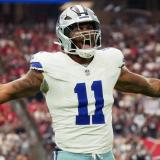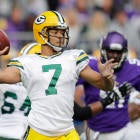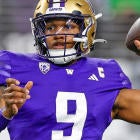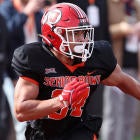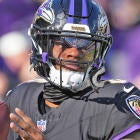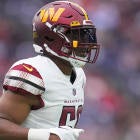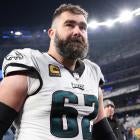Aaron Rodgers is out for the foreseeable future. His absence will of course be a blow to the Packers' chances of winning the NFC North, making the playoffs, and winning the Super Bowl. We know this to be true because when the best player in the league misses an extended period of time, it tends to adversely affect his team's fortunes for as long as he's out.
Having established that, though, the operative question becomes what to expect from Green Bay's offense with Rodgers on the sideline and backup quarterback Brett Hundley under center. To do that, it's helpful to first look at some history.
Rodgers has been the Packers' starting quarterback since 2008. During that span of time, he's started all 16 games six times; he only missed time in three different seasons: 2010, 2011, and 2013. It's the nine games that were started by non-Rodgers quarterbacks that are relevant to the question here, because games Rodgers played in don't really give us any information about what a Rodgers-less Packers offense looks like. (We're not as concerned with the games Rodgers left early due to injury, because those did not give the Packers enough time to construct a backup-specific game-plan. They had to freelance an adjusted offense on the fly once their starter went down.)
Let's start here: Green Bay went 3-5-1 in the nine games Rodgers started by players other than Rodgers, good for a 0.389 winning percentage that is significantly worse than the 0.667 mark they've recorded in games started by Rodgers himself. It's not like Green Bay played extraordinarily difficult opponents in those contests, either. The combined winning percentage of their nine opponents in games other than those started by non-Rodgers quarterbacks was just 67-68.
The Packers actually did not lose all that much offensively – points per game-wise – with Rodgers out. They averaged 24.8 points per game across the nine starts from Matt Flynn (six), Scott Tolzien (two), and Seneca Wallace (one), compared to 27.4 per game in the 141 contests started by Rodgers. A drop-off of only 2.6 points per game is practically nothing, considering the drop-off in talent level from Rodgers to his backups.
On that level, it's encouraging that the Packers have shown the ability to put up points in games where Rodgers sits. However, looking only at his extended absence in 2013 (seven games) tells a slightly different story. The Flynn-led Packers hung 27 points on the 2010 Patriots and 45 on the 2011 Cowboys. Remove those two totals and focus only on the seven-game absence in 2013, and Green Bay's points per game average without Rodgers dropped to 21.7 per game. Basically, they dropped off from the equivalent of the 2008-2017 Cowboys offense to the equivalent of the 2008-2017 Bengals offense. So that number, obviously, is far less encouraging.
More than the performance, though, it's the change in style of play that could be different with Hundley than with the Packers' previous backups. Flynn and Tolzien came into the NFL as traditional drop-back passers, and had traditional drop-back passer metrics. Hundley worked well from as a traditional quarterback during his career at UCLA, but he also showcased far more athleticism than anybody else that's made more than one fill-in start for Rodgers.

Those stars next to Hundley's metrics indicate that he finished in the top-five among players at his position in each of those NFL combine drills. You might notice how neither Flynn nor Tolzien has a single star next to any of theirs. Hundley ran for 1,437 yards and 30 touchdowns during his three years as UCLA's starter, and when you factor in the fact that college football counts sacks as running plays and negative rushing yards, Hundley's rushing numbers look even more impressive.
It's because of that additional skill set that we could see the Packers change their offense up a bit from what it's looked like when Rodgers has been out in the past. When he missed extended time in 2013, the Packers' run-pass ratio essentially stayed static. Green Bay handed the ball off to a running back or wide receiver on 39.7 percent of its plays during Rodgers' starts, and on 40.3 percent of its players during the games started by Wallace, Tolzien, and Flynn. Both of those figures are essentially consistent with where the Packers' hand-off rate has sat during Rodgers' tenure as the starter. At least until the last two years, when various running back injuries have nudged their hand-off rate down below 30 percent.
For a couple reasons, that number should jump into the mid-to-high 40s with Hundley as the quarterback – at least over the next few weeks. First of all, the threat of Hundley as a runner himself should help hold edge defenders at bay and allow Aaron Jones and Ty Montgomery to do more damage than backs working with Flynn, Tolzien, or Wallace under center have done. Hundley has experience, both at UCLA and during preseason games, reading edge defenders and making a decision on whether to give or keep the football.
Not only does Hundley bring an element to the run game that previous backups didn't, but the Packers' opponents over the next several weeks should dictate that they try to run the ball more often, unless they get down by enough that they're forced into throwing. Over the next five weeks, the Packers square off against the Saints, Lions, Bears, Ravens, and Steelers. Four of those five teams have worse run defenses than pass defenses, as measured by Football Outsiders' DVOA. The Saints' and Bears' run defenses fall in the bottom-half of the league, while the Ravens' and Steelers' run defenses have been merely average thus far. Meanwhile, all five of those teams rank in the top-half of the league in pass defense, and the Lions, Ravens, and Steelers rank in the top-10.

For that reason if not any other, the Packers should be determined to lean more on the run over the next several weeks as Hundley gets his sea legs, giving him time to acclimate to the position and steady himself for a stretch run where the Packers face a string of defenses far worse against the pass than the run. In their final five games of the season, the Packers face the Buccaneers, Browns, Panthers, Vikings, and Lions, all of whom have better run defenses than pass defenses. All of them with the exception of the Bucs rank in the top-10 in run defense DVOA, and the Bucs are not far off at 14th.
In addition to handing the ball often more often, we can also expect to see the Packers have Hundley break the pocket by design more often. The Packers offense features a ton of pocket-breaking, to be sure, and plenty of it is designed. But a lot of it also comes from Rodgers' ability to escape pressure better than any other quarterback in the NFL. Hundley might be athletic, but he doesn't have Rodgers' escapability. Nobody does.
Designing ways to get him to the outside is a good way to both make good use of his athleticism and put less pressure on him to make Rodgers-like decisions from inside the pocket. Getting him on the perimeter could provide running lanes, and he can gain "easier" yards with his legs than with his arm at times. That helps keep the chains moving. Second, rolling him out to one side of the field or another reduces the amount of defense-reading he has to do on the fly, because he only has to read half the field. At least earlier in his tenure as the starter, that's a good way to make things simple for Hundley and get him some easier throws.
When Hundley does drop back inside the pocket, it seems reasonable to expect the Packers to keep tight end Martellus Bennett in to block more often. First of all, Bennett is a terrific blocker. Second, Green Bay has been dealing with offensive line injuries all season and Rodgers has been under pressure quite often. Again, nobody is better than he is at escaping said pressure and making plays against it, so you don't necessarily have to keep an extra man in to block when he's out there. When it's Hundley, though, you're better off playing it a bit safer. Bennett only stayed in to block on three of his 32 pass snaps last week against the Vikings, but the Packers were also down 7+ points for almost the entire second half. In score-neutral situations, it'll help to have the extra body protecting against the pass rush.
The Packers are unlikely to completely junk their normal offense with Rodgers on the sidelines. Mike McCarthy does appear to have confidence in Hundley's skills. They've been developing him for a couple years now and Hundley's been quite good during his preseason action, completing 98 of 148 throws for 1,179 yards, 10 touchdowns and two interceptions. By adjusting things slightly from the way they've done it in the past with Rodgers out, they can take advantage of Hundley's athleticism and put him in better position to succeed as a passer than his fill-in predecessors. If he can play within himself, make easy throws, and gain easy yards on the ground, and the Packers defense steps up to meet the challenge, maybe Green Bay can even weather this storm and make it to the playoffs in time for Rodgers' return.







